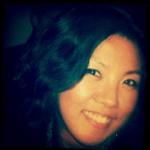Once upon a time, moonlighting was usually done by those who were trying supplement their main income (the phrase “moonlighting” comes from the time when people worked these second jobs at night), but more and more people who take on a second job don’t just do it for extra cash. They’re using it build additional skills, give back to their community or follow a passion – and sometimes these elements of their lives can’t always be found in their 9-to-5 workplaces.
WHY PEOPLE DO IT
1. To get out of a career rut
Seeing things with fresh eyes is always helpful. Sometimes, moonlighting helps you see what other industries are like, and can help alleviate feelings of being in a career rut, particularly if you’ve been in a role or company for many years. Learning about the industry you’re moonlighting in might help you move into another line of work, and by moonlighting, you are able to maintain the stability of your current role whilst still “testing the waters” in your secondary role. This is great for those that are thinking of changing careers or going freelance, but aren’t too sure if they’re ready to do it just yet.
2. To network and build connections
We’ve all heard that so many roles available are not always the ones advertised. Therefore, it’s important to build your network of colleagues not just for furthering your current role, but also for safe-proofing your career (or new career) should the unfortunate happen and you are made redundant or you face unemployment. Moonlighting in a different role from your 9-to-5 one means you meet new people to build a rapport with, learn from and maybe even contact if you find yourself in a job loss situation. The client you met with for your weekend catering job might also share your skills in digital marketing, and before you know it, you’ve been invited to a great networking event with others in that field.
The people you deal with in your secondary role might also be a completely different crowd to those you deal with in your primary role. You might share passions and interests with a new group of people, who you could eventually call your friends.
Moonlighting helps you see what other industries are like, and can help alleviate feelings of being in a career rut, particularly if you’ve been in a role or company for many years
3. To build new skills
Growth and development are always important, particularly in your working life. Moonlighting assists you not just gaining new skills, but enhancing the skills you already use in your primary job. Upskilling and diversifying your skills is another way of future-proofing your career in an economic downturn or an unplanned period of unemployment. Skills such as project management, client liaison and budget tracking work across a wide variety of industries, and if they’re areas of your primary role you haven’t done in a while (or, if you’re in a junior role, never done before), then moonlighting will expose you to these skills.
4. To follow a passion
Many people who moonlight do it to follow a passion. They might want to volunteer for a local charity group, fulfil their skills as an illustrator or finally let the world know just how awesome a pianist they are. Hard to do in a traditional office when you’re a Business Analyst. Moonlighting gives you the opportunity to follow the interests you have that might not be directly aligned to your full-time role. This can be done outside of office hours, and without giving up, yep, here it comes, your day job. So you can be a kindy teacher AND a jazz singer!
5. To give something back
In many cases, moonlighting doesn’t have to be about earning additional income. Many people take on work outside their day job to give back to their community and to make a difference in the lives of others. Phil Preston, a Community Engagement Strategist, connects individuals and businesses to social issues, thereby making a meaningful impact through skills and expertise delivered. He sees many people that want to enhance their skills yet prefer to do so for pro-social causes. “The common theme is that all seek to change the world in either a small or large way”, he says, “Sometimes it is linked their work directly or indirectly, and other times it is not. However, they all manage to ‘keep their day job and change the world!’”.
According to Preston, moonlighting in this way is motivated by:
- Career development (how can I upskill now instead of waiting?)
- Self development (I feel good when I learn or do new things)
- Empathy (I’ve been touched by an issue and can’t help but get involved)
- Work congruence (by linking my business success to a relevant social issue, I will keep investing in it)
- ‘Economic’ reasons (I want a better quality of life, I want to live in a connected and strong community)
Moonlighting gives you the opportunity to follow the interests you have that might not be directly aligned to your full-time role.
MEET SOME MOONLIGHTERS
Alyssa Barraga
Regular occupation?
I work full-time as an external financial auditor at a Big 4 Accounting Firm. I love what I do during the week because of the challenging nature of the job and the personal growth I have experienced since I’ve started working. Being in professional services, I am constantly pushing my limits and learning every single day.
Secondary occupation?
Outside of my full-time job, I run my own mobile hairstyling business. I love it because I’m able to create relationships with my clients and play a role in their special day. Styling hair is a creative outlet for me and is a completely different field to what I do on a full-time basis.
Benefits from secondary occupation?
Being a hairstylist allows me to be creative, which is a skill that I’m not able to utilise to the same extent as an accountant.
I love it because I’m able to create relationships with my clients and play a role in their special day.
How do they complement each other?
Hairstyling and auditing financial statements complement each other because of the client service skills I’ve developed in both roles I play, whether it be meeting and communicating with my hair clients or meeting with CFOs during an audit engagement.
Sze Wing Yip
Regular occupation?
I work in an education and learning company, my role is to actively promote efficacy in our company. I facilitate a lot of internal reviews and workshop, presentations, training and assessment as well. I work in a very new area of the company. I don’t love what I do there, but it isn’t miserable. It is the stability that keeps me there and I do learn from my day job.
Secondary occupation?
I run a business called Intuitive Coaching, I help my clients actualize their potential, purse their goals and step up in life. I teach seminars and workshops. I am also actively involved in a wellness community business called Embrace Life Live Life. I know that what I do makes a difference. I also love talking about spiritual matters and inspiring others to create a happier life. I enjoy working with the spiritual and wellness industry, people bring in different knowledge and wisdom and I love learning from everyone too.
Benefits from secondary occupation?
I enjoy the work that’s related to body, mind and spiritual alignment. I love the field of personal development, talking about meaning, success, purpose, and calling in life. My 9 to 5 job is such a big corporation, but when I work with my clients 1 on 1 or in groups, it’s a lot more personal. I spend hours learning and reading up on coaching, spiritual matters or business building matters.
How do they complement each other?
I do get better in presentation, and I regularly present in front of all my colleagues, including my CEO. I’m also more tech-savy. This helps me with my Intuitive Coaching business, where I combine practical coaching strategies with intuitive insights to help my clients to better their lives, to pursue their goals and to actualize their highest potentials.
I love the field of personal development, talking about meaning, success, purpose, and calling in life
Fiona Hunt
Regular occupation?
I’m the Managing Director of Adventure World Australia and New Zealand, a travel company that creates curated soft adventure travel to amazing destinations like Africa, Latin America, Asia etc. We focus on unique travel adventures, like getting up close to the Western Lowland Gorillas in the Congo, or Wildlife of the Galapagos – all the fun stuff! What I love about my work is managing all the levers that contribute to a successful business, and the constant assessment, analysis and activation of those levers. I know that sounds completely geeky, but there you have it!
Secondary occupation?
I write an art blog, Draw A Line Somewhere and manage its community of about 2000 readers. The blog is full of articles about art, design, art history, exhibition reviews, new artists etc. The grand plan is to then do a PhD (after completing my Masters in Art History and Curatorship) and hopefully write a book (or two) on my favourite art topics.
Benefits from secondary occupation?
Art, writing and study are fundamental drivers for me. On the study side, I find the intellectual rigour and intensity of study really stimulating, and I find that I function much more clearly and effectively at work, and at home when I am working intensely.
With the blog, I find writing about art just makes me really happy. Having uninterrupted time to immerse myself in artworks or artists that I am passionate about is a real joy. I also love to share the great stories with the reading community and find great pleasure in their interest and enjoyment in the blog.
Having uninterrupted time to immerse myself in artworks or artists that I am passionate about is a real joy
How do they complement each other?
Well, art and culture are great motivators to travel and go really well together, so I’m very conscious of that, and like to build product for that kind of traveller. Also, the combination of the day (structured and process-driven work) and the evening (creative thinking) is a great balance. I’m married to an artist, so we have a very creative home life. It’s a wonderful counter balance to my work life, so I feel very fulfilled.
Featured photo credit: lichtempfindlich via photopin cc
Erica is a Sydney-based writer and digital marketer, and can often be found pounding away on a keyboard, writing about everything from travel, lifestyle, well-being and anything in between. When she is not writing, she is STILL writing, developing copy and content for websites and marketing collateral. Erica is passionate about film, literature and culture (high brow and low brow), as well as pro-social causes supporting cultural engagement (counting travelling as one of them). In her spare time, she loves nothing more than to curl up with a good book, go for a nice dinner with friends or spend time with her partner.





